Museums, Theaters, Architecture, Maastricht
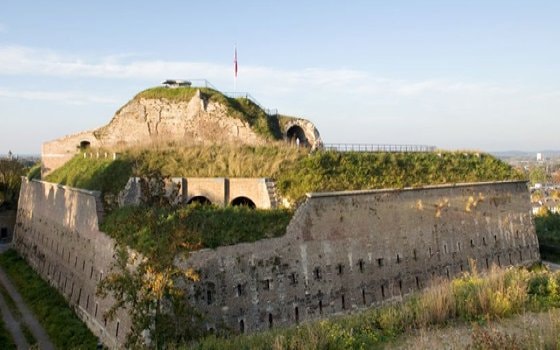
Removed from Unnamed collection
Saint Peters Fortress 
Saint Peter’s Fortress was built on St. Peter’s Mount in the early 18th century. It’s initial purpose was military, allowing the people of Maastricht to defend the city from the French. While successful for a long time, the city had to surrender in the end. https://www.holland.com/global/tourism/destinations/maastricht/fort-st-pieter.htm
Map
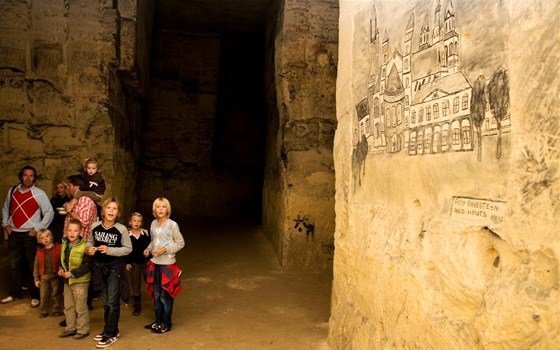
Removed from Unnamed collection
St. Peters Caves 
In one of the highest spots in Holland, miles of tunnels make for a unique experience. A tour beneath Saint Peter’s Mount near Maastricht allows you to explore the caves that were excavated by men through the centuries. https://www.holland.com/global/tourism/destinations/maastricht/caves-of-st-peter.htm
Map
Explore more places related to this search:
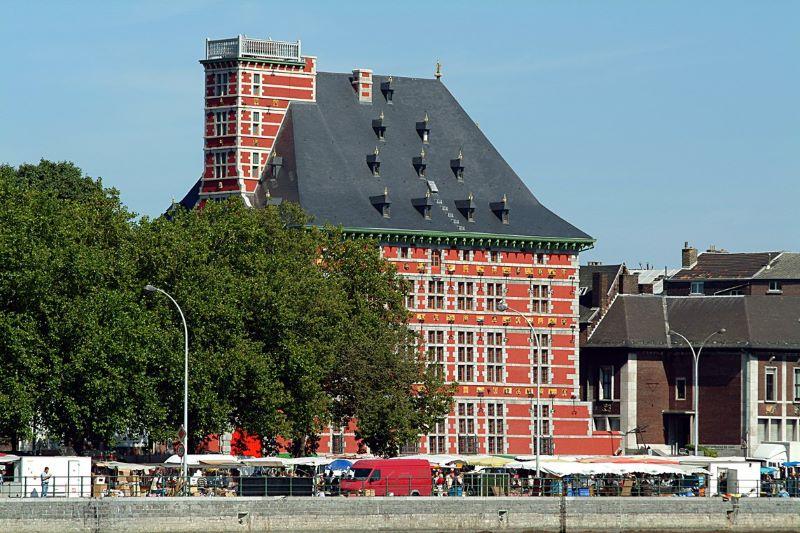
Removed from Unnamed collection
The Grand Curtius 
Discovering 7000 years of art and history!
What is the Grand Curtius Museum? This museum contains more than 7000 years of regional and international artefacts and more than 5200 items displayed in chronological or thematic order. You also can find prestigious collections from the archaeology, decorative arts, religious art and Mosan arts, as well as the weaponry and glass.
The Grand Curtius located in the historical heart of the Ardent City, the Grand Curtius offers a fresh perspective of the city, houses gardens and a cafeteria that are open all year round. https://www.visitezliege.be/en/le-grand-curtius
Map

Removed from Unnamed collection
Ansembourg Museum 
This private mansion, built in approximately 1740 for a banker, pays witness, through its architectural features and decorative arts that are typical of Liège, to the sophisticated lifestyle of this era. Art objects are on display, whilst furniture from Liège and the rest of Europe depict what the interiors of the time would have resembled. The Ansembourg Museum also proposes exhibitions throughout the year which promote one aspect or another of the collections from Liège's museums.
For the Ansembourg Museum, this beautiful mansion built around 1740, the first phase of restoration will soon begin. In 1903, the city of Liège acquired the building, which in 1905 became its museum of archaeology and decorative arts. https://www.liege.be/en/discover/culture/museums/ansembourg-museum
Map
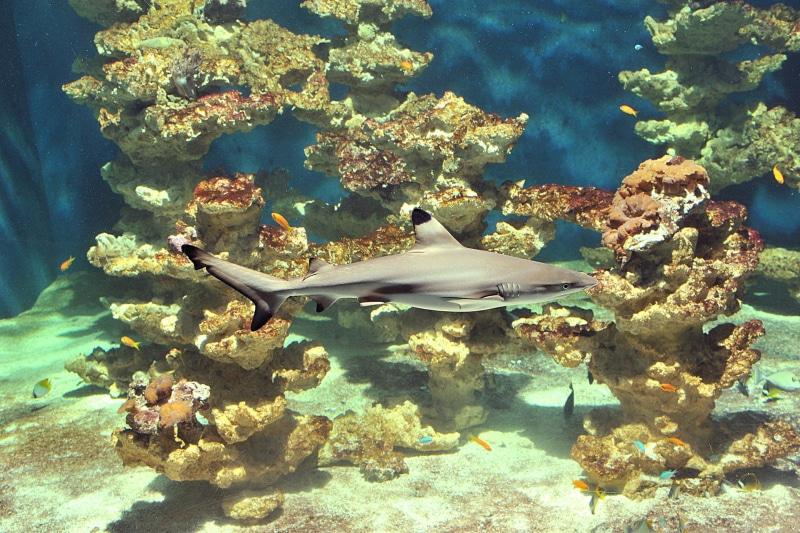
Removed from Unnamed collection
Aquarium - Museum 
The university Aquarium-Museum, pole of excellence of animal biodiversity, has been labelled « Museological Institution of Category A » by the Wallonia-Brussels Federation and has been accredited « Tourist Attraction 4 suns » by the Public Service of Wallonia.
Approximately 2,500 representatives of 250 species of ocean, sea, lake and river fish from around the world populate the 46 pools of the Aquarium and nearly 20,000 stuffed animals from every continent are exhibited at the museum. https://www.visitezliege.be/en/aquarium-museum
Map
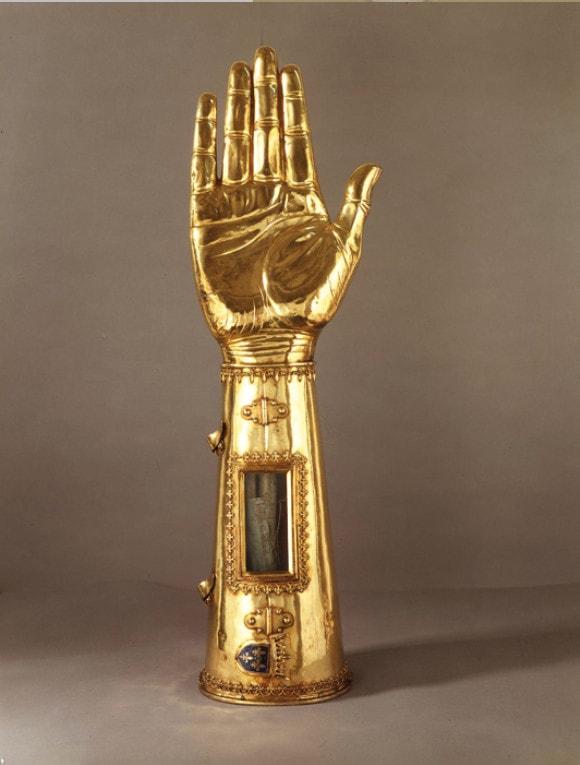
Removed from Unnamed collection
Aachen Cathedral Treasury 
Charlemagne's palace, the era of coronations and the tradition of pilgrimages have produced an unique and magnificent church treasure whose most famous pieces are on show today in the Cathedral Treasury. The oldest piece is a Roman sarcophagus which portrays a scene from ancient mythology, and in which Charlemagne was initially buried. From Charlemagne's palatine school in Aachen comes a book cover carved from ivory and showing scenes from the story of Christ's resurrection. According to medieval legend, several other pieces of the Cathedral treasure belonged to Charlemagne himself, one of them a hunting horn fashioned from the tusk of an elephant. http://www.route-charlemagne.eu/Stationen/Dom/Domschatzkammer/index.html?lang=EN
Map

Removed from Unnamed collection
Town hall and market square 
The historic façade is already an indication of the building’s glorious history: 50 rulers, 31 of whom were crowned in Aachen, surround the central figures of Charlemagne, the Holy Mary and Pope Leo III. In the elaborately decorated rooms, too, the story of the city hall, which was built on the historic site of the great palace hall of Emperor Charlemagne, is brought to life. In the coronation hall, where formerly the rulers took a meal after being crowned, copies of the imperial regalia remind us of this glorious era today. https://www.aachen-tourismus.de/en/discover/sights/town-hall/
Map
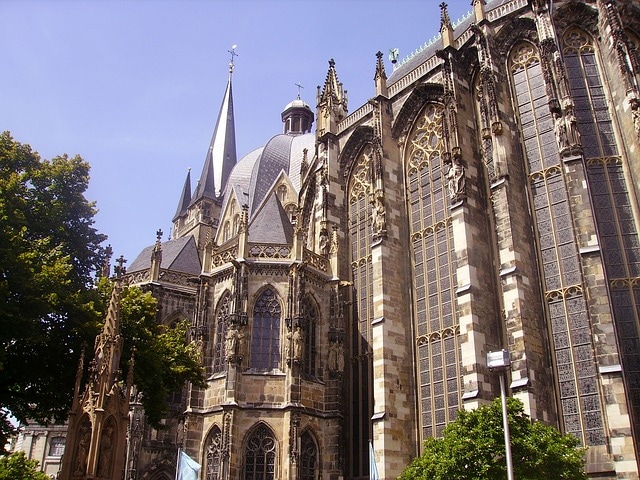
Removed from Unnamed collection
Aachen Cathedral 
Charlemagne intended his Church of St. Mary to become a complete image of the Heavenly Jerusalem, symbolizing the contact of the Earthly and the Heavenly. After app. 20 years of construction this vision was architecturally and liturgically realized around the year 803. The significance of the church arises from its 1200year old history: burial place of Charlemagne, coronation church for the Roman-German kings and Pilgrimage Church attracting the faithful from all over the world every seven years. https://www.aachenerdom.de/
Map

Removed from Unnamed collection
Hof and Koerbergasse 
Located between the Puppenbrunnen, the city hall and the Bahkauv, the Hof square has something to offer everyone, and is a good place to spend a few hours with its restaurants, bars and cafés. Take a break here, lean back and take it easy, Aachen-style.
Starting from the Hof, walk down the Medieval-style Körbergasse, past the traditionalist Plum’s Kaffee coffee roasting house and the basket weaver’s “Korb Bayer”, which first opened its doors in 1865, until you reach a symbol of the city: the “Printenmädchen”, or “little gingerbread girl”. Now enter Aachen’s oldest coffee shop, the Alt Aachener Café-Stuben van den Daele, which was founded in 1890. The rooms, which are full of nooks and crannies, and the many stairs in this historic building, give the café its particular charm. https://www.aachen-tourismus.de/en/discover/sights/hof/
Map

Removed from Unnamed collection
Gallery De Mijplaal 

Gallery "De Mijplaal" is situated on the fine line different styles and arts. In this way, they prove, that because of between confrontation the borders between those styles fade away and that leaves room for very interesting dialogues to flourish.
Starting from the dialogue between what the old and new was and what is. De Mijlpaal wants to continue on its search for the interfaces between visual arts, photography, mode and design. Gallery De Mijpaal is a pioneer who tries to bring young artists together with the already renowned artists.
It's not the first rodeo for gallery De Mijlpaal on multiple occasions in the past, they already hosted a wide range of projects with international artists at unique locations situated in Belgium and abroad. https://www.myknokke-heist.be/en/galleries/kunstgalerij-de-mijlpaal

Knokke
Map
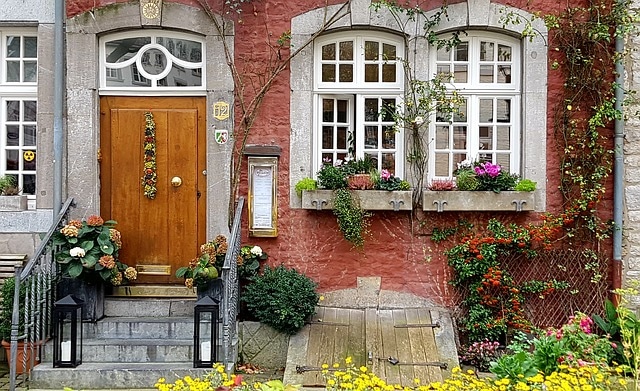
Removed from Unnamed collection
Explore Kornelimuenster 
Kornelimünster is located in the Inde valley, and is Aachen’s most picturesque district. The historic centre, which surrounds the Medieval priory church, St. Kornelius, has remained almost entirely intact today, and invites visitors to walk around and spend a few hours there.
As well as its wonderful, historic town centre, Kornelimünster is also a good starting point for a large number of expeditions to the surrounding area. Whether you prefer leisurely cycling on the Vennbahn track, mountain bike tours or hiking on the Eifelsteig – here, there’s something for everyone. https://www.aachen-tourismus.de/en/discover/sights/kornelimuenster-the-eifel/
Map
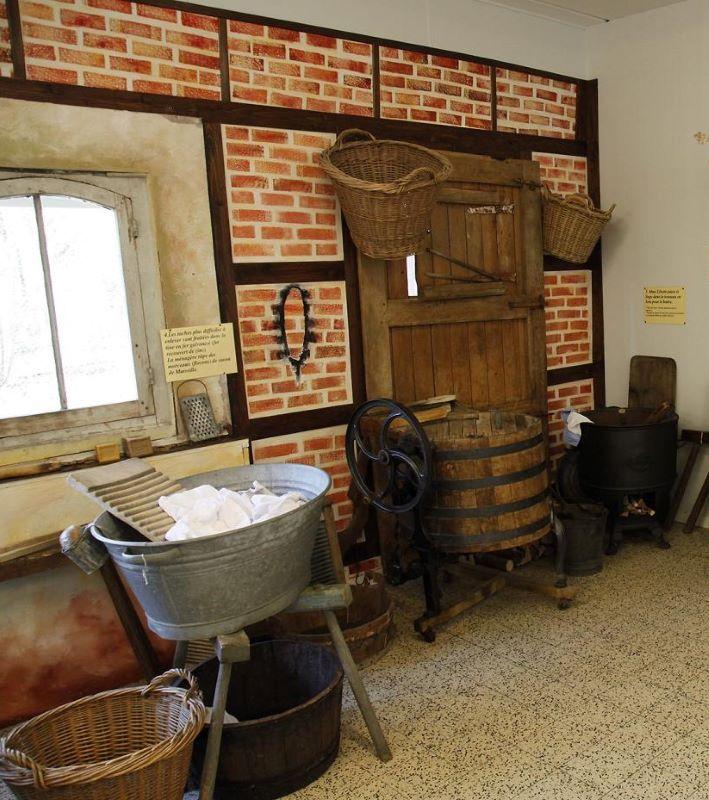
Removed from Unnamed collection
The Museum of Laundry 
The Museum of Laundry, in the old part of the city, offers you a journey through the history of soap, laundry and the living and working conditions of laundresses in Spa.
Some twenty rooms tell you how women - and sometimes men - did the laundry from antiquity to the present day. You can admire the first wooden washing machines, discover the products used before the invention of soap, see amazing machines working... and learn how soap was invented and which processes were found to whiten linen. http://walloniabelgiumtourism.co.uk/en-gb/produit/attractions/activites/musea/discoveries/musee-de-la-lessive-laundry-museum-in-spa/9258
Map

Removed from Unnamed collection
Le Domaine de Berinzenne 
Nestled at the heart of the forests near Spa, by the Fagne de Malchamps, this estate opens its spaces to the public: a panoramic tower, a tree planted park with a pond and picnic area. It is also home to the Musée de la Forêt et des Eaux and to the CRIE.
Le Domaine de Bérinzenne, with its tree-shaded alleys and exceptional views of the region, is a pure invite to relax and dream. From the top of the tower, visitors can see the Fagne, sometimes all the way to the horizon, bathed in sunshine or quite mysterious partly wrapped in mist.
The pleasant Maison de la Nature et de la Forêt (open weekdays) provides information on the region, documentation on the local hikes and features: a nature shop, temporary exhibitions and cafeteria. http://walloniabelgiumtourism.co.uk/en-gb/content/domaine-de-berinzenne-maison-de-la-nature-ardennes-belges
Map
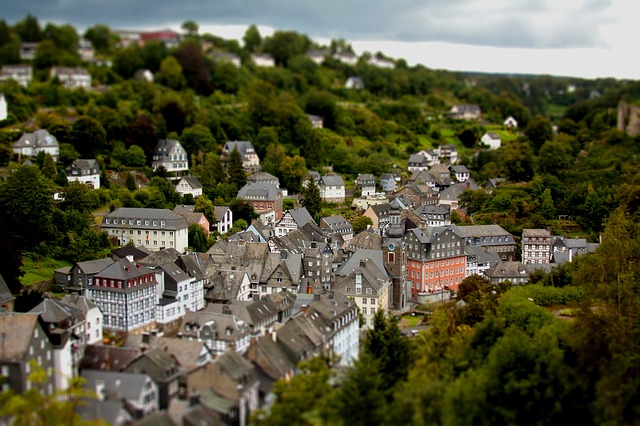
Removed from Unnamed collection
Visit Monschau 
Vibrant activities within ancient walls, a medieval townscape with idyllic half-timbered houses, narrow streets and cobblestones.
Monschau is the cultural centre of an entire region and one of the most popular holiday and excursion destinations in the Eifel.
More than 350 kilometres of signposted trails to the right and the left of the Eifelsteig will lead you through paths of adventure, e.g., along the imposing beech hedges, to the blooming narcissi meadows and up through the Hohe Venn (High Fens), a raised bog that is absolutely unique in its kind within Europe. https://www.monschau.de/en/
Map
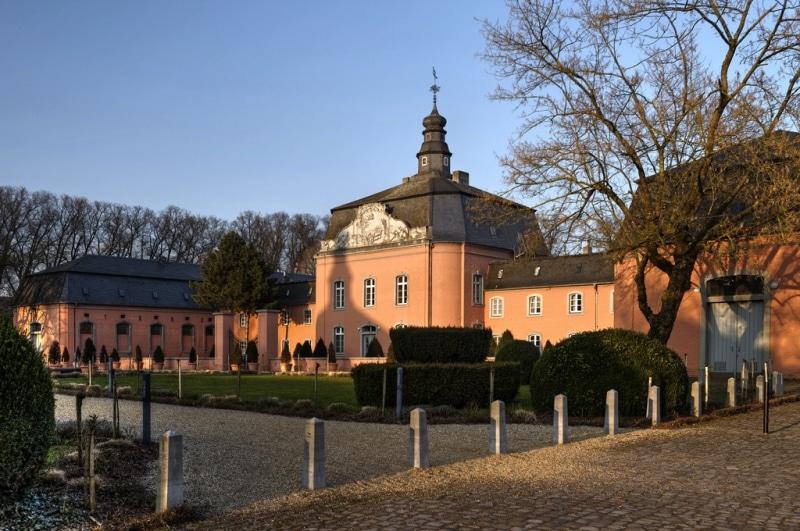
Removed from Unnamed collection
Wickrath Palace 
The Wickrath Palace, which is surrounded by a lake and romantic parklands close to the river Niers. http://www.germany.travel/en/towns-cities-culture/towns-cities/moenchengladbach.html
Map

Removed from Unnamed collection
Rheydt House 
A trip to Mönchengladbach would not be complete without a visit to Rheydt House, the beautifully preserved Renaissance palace. http://www.germany.travel/en/towns-cities-culture/towns-cities/moenchengladbach.html
Map
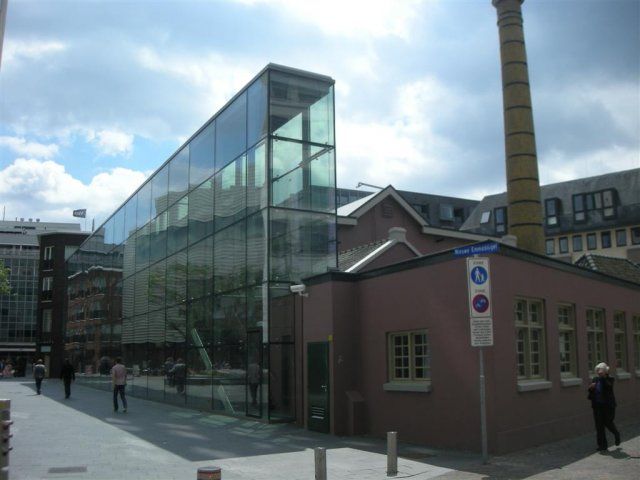
Removed from Unnamed collection
Philips Musuem 
The old factory where Philips made his first incandescent lamp, has undergone extensive renovation and been extended to an interactive museum where heritage and innovation come together. https://www.thisiseindhoven.com/en/locations/2225864208/philips-museum
Map

Removed from Unnamed collection
Temporary Art Centre 
Come to TAC (Temporary Art Centre)! Platform for cultural productions and performances, 70 art studios, young experimental stage, theatre, parties, café and restaurant. https://www.thisiseindhoven.com/en/locations/3541025950/temporary-art-centre-tac
Map
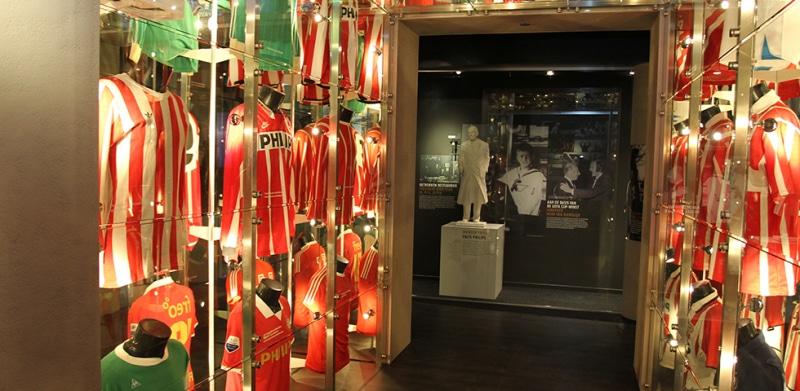
Removed from Unnamed collection
PSV Museum 
Entrance 17 of Philips Stadium will take you to the PSV Museum where you can relive the most important events in the 100 years' history of PSV. A must-see for every PSV supporter, in fact, for every football fan. https://www.thisiseindhoven.com/en/locations/766302424/psv-museum
Map
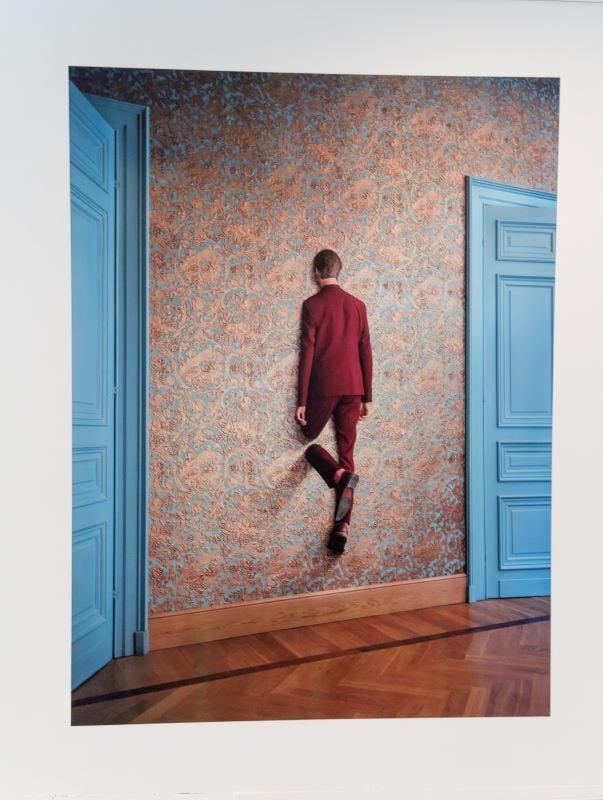
Removed from Unnamed collection
M-Museum Leuven 
The museum displays old and new art inspired by Leuven’s versatility. The collection is mainly focused on the art production in Leuven and Brabant from the Middle Ages to the 19th century. It includes Constantin Meunier, Jef Lambeaux and Georges Minne.
In addition to the permanent collection, M also presents temporary exhibitions of both old masters and contemporary artists. Discover the personalised offer for groups and families.
The impressive architecture deserves special attention. Designed by Belgian top architect Stéphane Beel, the complex integrates historical buildings and contemporary architecture. Don’t miss the enclosed garden and roof terrace. http://www.visitleuven.be/en/m-museum-leuven
Map

Removed from Unnamed collection
Leuven Town Hall 
The town hall is Leuven's pride and joy. Moreover, it's one of the best-known Gothic town halls worldwide. It took three architects and thirty years to build it. Leuven's 'Hall of Fame' features 236 statues, which were only added to the façade after 1850.
These days the town hall merely has a ceremonial function after the city's administrative services moved in 2009. The tourist information center is situated on the side of the town hall.
Also daily guided tours are available. The guide will tell you about the construction history of this Gothic gem. You will discover the story behind the 236 sculptures on the façade. Afterwards, you can visit the foyer, the reception rooms, the large and small Gothic Hall, the wedding hall and the council hall.
Every third Saturday of the month you can visit the cellars under the town hall. These cellars have housed the ‘Jaartallen’ collection since the very first edition in 1890. The entrance is located at Grote Markt square next to the town hall’s flight of step. http://www.visitleuven.be/en/town-hall
Map
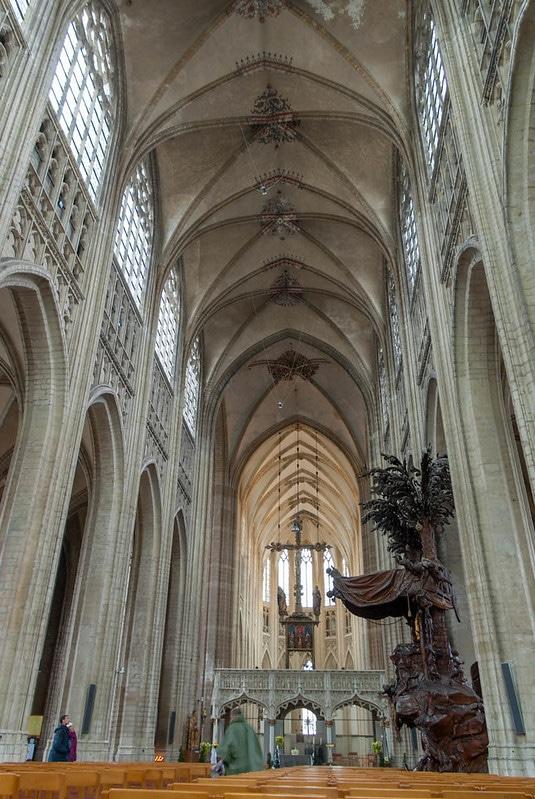
Removed from Unnamed collection
Saint Peter's Church 
Saint Peter’s stands in the very centre of Leuven. It was built as a Romanesque church in 986, and it is therefore the oldest church in the city. In 1176, the building was ravaged by fire (probably for the first time), and two centuries later, part of the church again burned to the ground. In the 15th century, the Romanesque building was gradually taken down to make way for the Gothic church you see today. This process took more than a century.
Over the last century, Saint Peter’s Church has undergone several extensive renovations, returning it to its full glory. That is why Saint Peter’s Church is now generally recognized as one of the finest examples of 15th-century Brabantine High Gothic architecture, and it is an unmissable tourist attraction in the city of Leuven. https://www.mleuven.be/en/saint-peter%E2%80%99s-church
Map
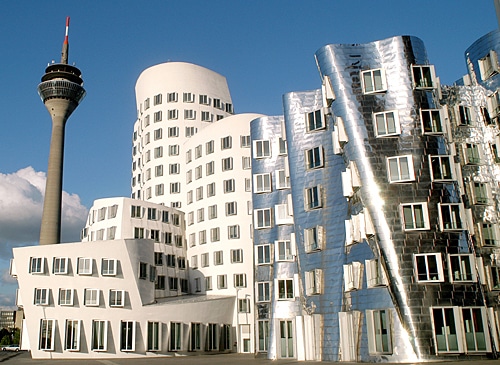
Removed from Unnamed collection
Gehry Buildings 
The art and media center Rheinhafen by Frank O. Gehry (USA) is divided into three contrastingly designed parts of the building and looks like a giant sculpture. https://www.duesseldorf-tourismus.de/sehenswuerdigkeiten/architektur/gehry-bauten-der-neue-zollhof/
Map
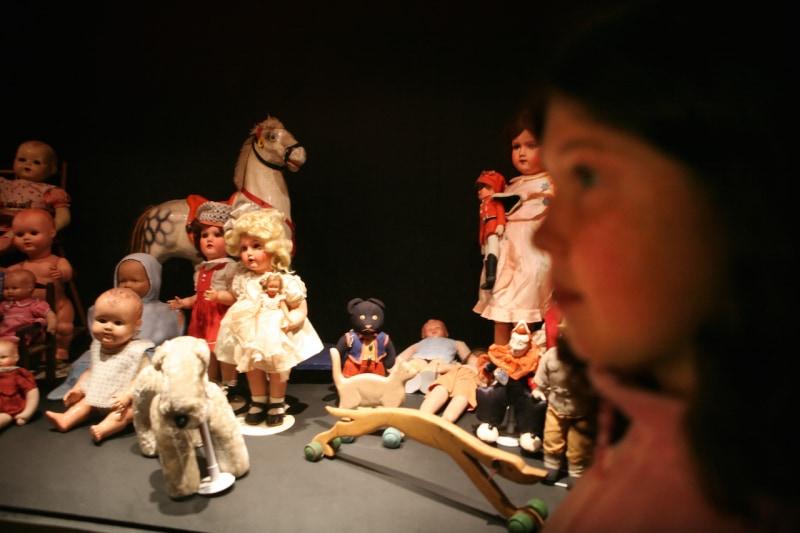
Removed from Unnamed collection
Toy Museum 
The Toy Museum boasts one of the largest collections of toys in Europe. You'll find toys from all over the world, from early toys to modern. There's much more to a museum visit than just looking: you can play traditional games and relive historical events such as the Battle of Waterloo as if you had been there in person.
Which of these toys did you play with yourself? And would young children still do so today? The museum brings memories of childhood flooding back for young and old. https://toerisme.mechelen.be/en/toy-museum-mechelen
Map
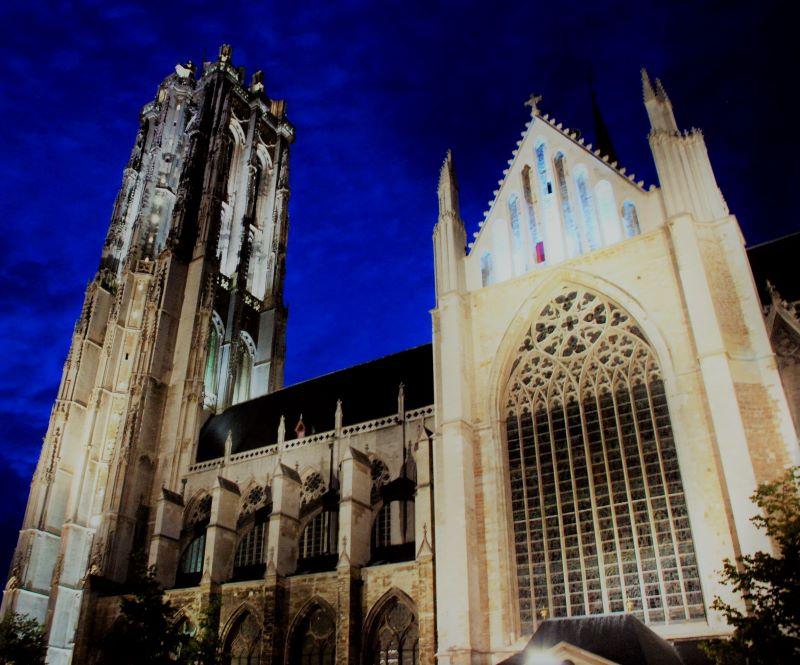
Removed from Unnamed collection
St Rumbolds Cathedral 
St Rumbold's Cathedral was built in the thirteenth century. From the outset it was larger and more impressive than all the other parish churches and later on it became 'the church of the archbishops'. Originally there was a triple-nave cruciform church on the site of the vast cathedral. Only after a series of building campaigns did the church become a city's star attraction.
The inside of the cathedral is breathtaking. You can admire Anthony van Dyck's painting 'Christ on the Cross', along with works by (among others) Michel Coxcie, Gaspard de Crayer and Abraham Janssens. The real showpiece, however, has to be the high altar by Lucas Faydherbe which dates from 1665. https://toerisme.mechelen.be/en/st-rumbolds-cathedral
Map
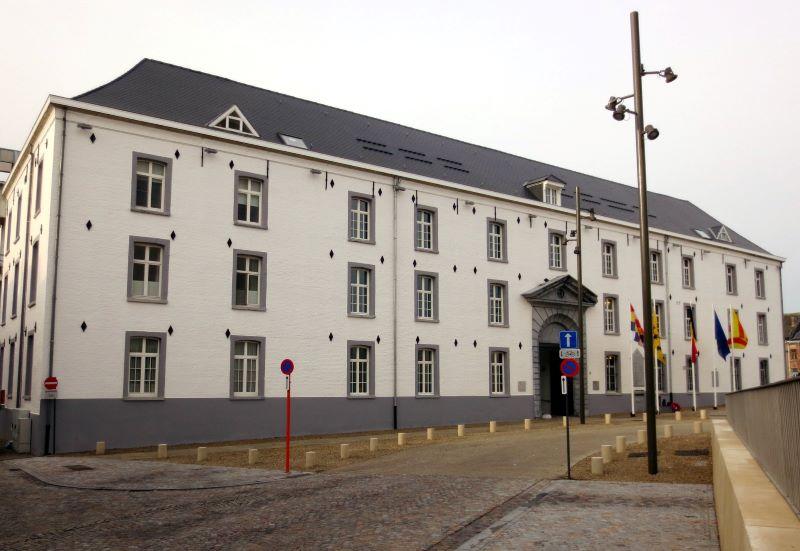
Removed from Unnamed collection
Kazerne Dossin 
Kazerne Dossin is a very special place of remembrance for Belgium. As 'SS Sammellager Mecheln', the Dossin barracks was a waitingroom for death for more than 25,000 Jews and gypsies from Belgium and Northern France during the Second World War.
A brand-new museum has been built to record the historical significance of this place for present and future generations and to illustrate themes like racism, exclusion and human rights. The combination of the human rights theme and the historical story of the Holocaust in Belgium makes Kazerne Dossin a project of European interest. The new museum was designed by leading architect and former Flemish Government Architect bOb Van Reeth. https://toerisme.mechelen.be/en/kazerne-dossin
Map
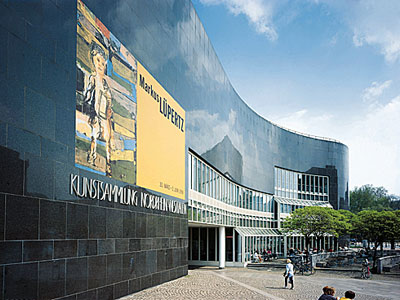
Removed from Unnamed collection
K 20 Art Collection North Rhine-Westphalia 
The history of the North Rhine-Westphalia Art Collection began in 1960 when the state government acquired a collection of 88 works by the painter Paul Klee. The Klee collection is the foundation of the "Foundation Kunstsammlung Nordrhein-Westfalen" founded by the state of North Rhine-Westphalia in 1961. https://www.duesseldorf-tourismus.de/sehenswuerdigkeiten/architektur/kunstsammlung-nordrhein-westfalen-k20-grabbeplatz/
Map
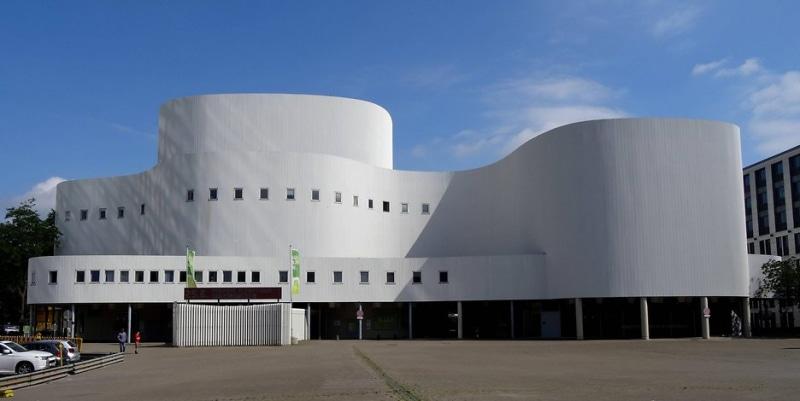
Removed from Unnamed collection
Duesseldorfer Schauspielhaus 
At that time, the opinions of contemporaries about the new theater building differed widely. The Schauspielhaus, created by the Düsseldorf architect Bernhard Pfau, was one of the last major theatrical buildings of the postwar period. https://www.duesseldorf-tourismus.de/sehenswuerdigkeiten/architektur/duesseldorfer-schauspielhaus/
Map

Removed from Unnamed collection
The Cologne Cathedral 
The Cathedral is still the second highest building in Cologne after the telecommunications tower. Its footprint is no less impressive, with the full length of the Cathedral measuring 145 m and the cross nave 86 m. http://www.cologne.de/what-to-do/the-cologne-cathedral.html#hash-2-0
Map

Removed from Unnamed collection
Arnsberg Old Market 
Arnsberg's historic heartbeats at the Old Market Square with its belfry, Old Town Hall (1710), "The Crimea" and Maximilianbrunnen (1779).
The Madonna in the niche at the town hall has survived many city fires and bears witness to an eventful history. On the side of the town hall is the symbol of Cologne rule in Arnsberg. The wonderfully renovated patrician building "Zur Krim" is reminiscent of a dark chapter in legal history, because the witch judge of Arnsberg once lived in it.
The bell tower - the symbol of the city - forms the "parlor" Arnsberg with the old town hall (1710) and the Maximilianbrunnen, framed by patrician and half-timbered houses. The bell tower was part of the former city fortifications in Arnsberg and is one of the oldest buildings in Arnsberg. He found a first written mention in a document by Count Gottfried III. from the year 1236, in which it was about the expansion of the city area towards the monastery Wedinghausen. With the execution of this plan, the tower lost its function as a defensive tower and served only as an inner-city gate. For centuries, the top of the tower consisted of a tent-like roof with four small corner towers. It was only around 1723 that the tower received its baroque onion dome after a city fire, which was preserved until 1945. http://www.arnsberg-info.de/geschichte/sehenswuerdigkeiten/alter-markt/
Map
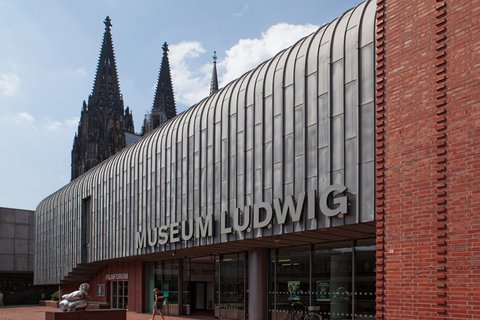
Removed from Unnamed collection
Museum Ludwig 
Roy Lichtenstein's M-Maybe, Andy Warhol's Brillo Boxes and George Segal's Restaurant Window, all icons of American Pop Art, had all just been completed when in 1969 they arrived as a loan at Wallraf-Richartz-Museum. http://www.cologne.de/what-to-do/museums.html
Map

Removed from Unnamed collection
Cinquantenaire Park 
The Cinquantenaire park is comprised of a vast set of gardens dotted with monuments and museums. It is dominated by a triumphal arch with three arches. The park hosts numerous activities throughout the year: events, celebrations, firework displays, sporting events, concerts, etc.
This place of interest was built in 1880 for the 50th anniversary of the independence of Belgium. The broad pathways lead to the Pavilion of Human Passions designed by Victor Horta, the Royal Museum of the Armed Forces & Military History, the Royal Museums of Art and History and to Autoworld. At the top of the three triumphal arches there’s a bronze quadriga and an unbeatable sweeping view over the whole of Brussels. https://visit.brussels/en/place/Cinquantenaire-Park
Map

Removed from Unnamed collection
Europa Building 
The Europa building is one of the most recent and magnificent examples of contemporary architecture in Brussels. The enormous cube is made up of 3 750 restored window frames and contains a glass lantern that, at night, is beautifully lit up by 374 LED tubes. This ‘House of the European Member States’, with its multicoloured interior, is the main seat of the European Council and of the Council of the EU, and is where meetings between EU ministers and heads of government are now held.
Philippe Samyn, the Europa building’s lead architect, sees it as the expression of a number of the values espoused by the EU. The façade thus consists of window frames from every EU country which signify both the diversity and the craftsmanship of every Member State, as well as the desire to promote sustainability. Thanks to the collection of rainwater, the use of solar panels across the whole area on the top of the building, and the optimised façade structure, the Europa building has been awarded the Valideo environmental certificate. The interior lantern, built in a shape that was necessary to avoid too much pressure being exerted on the ground and the underground metro tunnels, mainly contains meeting rooms and a large press room and press area. https://visit.brussels/en/place/Council-Europa-building
Map
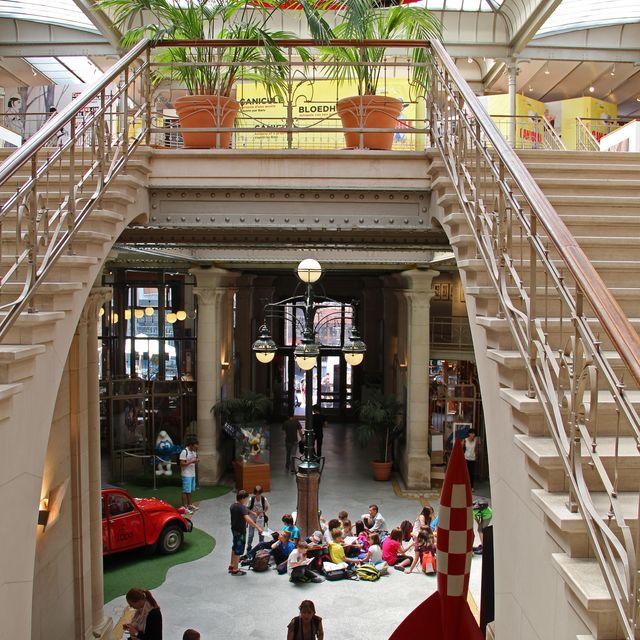
Removed from Unnamed collection
The Belgian Comic Strip Center 
The Belgian Comic Strip Center has been honouring the creators and heroes of the 9th Art for more than 25 years.
The regularly renewed permanent exhibitions and a diversified programme of temporary exhibitions enable visitors to discover the countless aspects of comics art. Tintin and the Smurfs lead the way towards further adventures, an encounter with a world where creativity has no limits.
Enhanced by an exceptional Art Nouveau home designed by Victor Horta, the Belgian Comic Strip Center is just as much a tribute to the pioneers as a glimpse of contemporary comics art. https://visit.brussels/en/place/The-Belgian-Comic-Strip-Center
Map
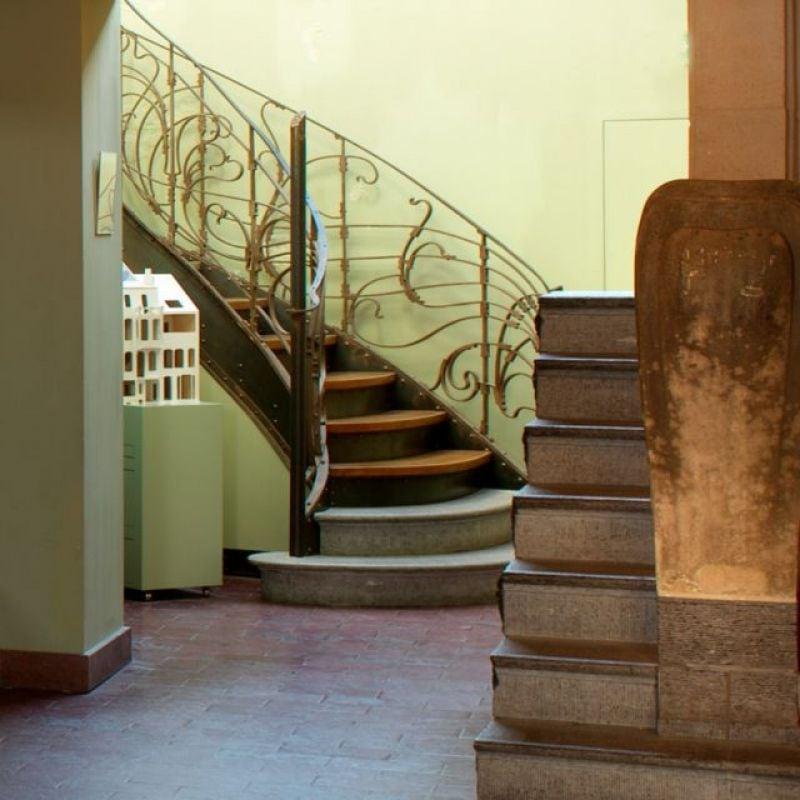
Removed from Unnamed collection
The Horta Museum 
The Horta Museum is established in the private house and studio of the famous architect, Victor Horta (1861 - 1947). Built between 1898 and 1901, the two buildings are characteristic of Art Nouveau at its peak. The house has kept intact most of its interior decors: mosaics, stained-glass windows, furniture, paintings and murals form a collection whose every detail evokes harmony and sophistication. The museum is also a centre for research into Victor Horta and Art Nouveau. The architect's personal archives, a collection of blueprints for his buildings and a library are open to the public by arrangement. https://visit.brussels/en/place/Museum-Horta
Map


